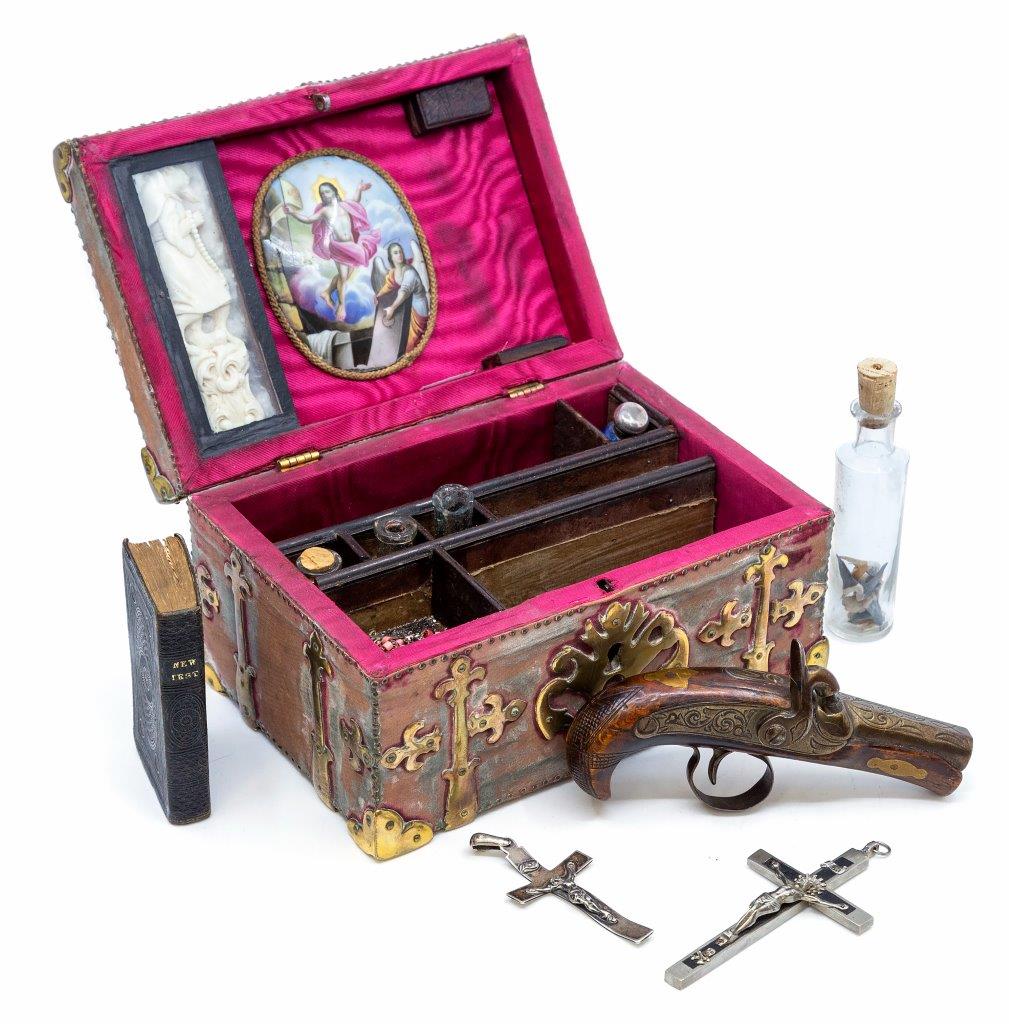
Auction houses often sell off strange items. But sometimes, the offerings are downright batty.
This week, an ornate kit for slaying vampires hit the block at an online sale mounted by Hansons Auctioneers in Derbyshire, England.
The Edwardian-era kit comes in a velvet, silk-lined box, with an interior lid adorned by a painting of Christ’s resurrection.
Inside is everything you need to kill a caped creature of the undead: three crucifixes, some rosary beads, a Bible, a small pistol, a pocket knife with a silver blade, tooth-pulling pliers, and—inexplicably—a vile of shark teeth.
The interior lid of the vampire-killing kit. Courtesy of Hansons Auctioneers.
“The task of killing a vampire was extremely serious, and historical accounts suggested the need for particular methods and tools,” the auction house’s founder, Charles Hanson, said in a statement.
“Items of religious significance, such as crucifixes and Bibles, were said to repel these monsters, hence their strong presence in the kit we have found.”
At the completion of the four-day sale, the item hammered down at £2,500 ($3,185), squarely within its pre-sale estimate of £2,000 to £3,000 ($2,500 to $3,800).
The name of the eventual buyer was not disclosed. One theory floated—just now, by this writer—is that he is a vampire himself, an auction-savvy bloodsucker with some extra liquidity seeking to destroy anything that threatens his eternal existence.
The kit, while old, is not believed to be the kind of “authentic” vampire-killing set that would have been available in the 1800s. The auction house dated the box back to around 1780, while the Bible was published in 1842 and the knife hails from the early 20th century.
Details of the vampire-killing kit. Courtesy of Hansons Auctioneers.
The kit is a “mixture of five or six different traditions that you never would have seen in a real one—and there were some real ones,” Robert A. Smart, an English professor at Quinnipiac University, told the New York Times.
“Authentic” kits would have included things like herbs, holy water, and silver bullets, he added, and the pocket knife was too small to do the job.
The consigner is an anonymous collector who purchased it at an antique fair, thinking it would make good dinner-party fodder. It’s believed to have been put together in the early 1900s, when vampire lore was brought back into the cultural conversation by Bram Stoker’s novel Dracula, published in 1897.
“Boxes like this have been made privately and commercially ever since,” Hansons auctioneer Rik Alexander said in a statement.
“Though our kit had an early Bible and the box is earlier, it appears to have been assembled around the Edwardian period in England. By this point the Dracula novel was having a big impact.”